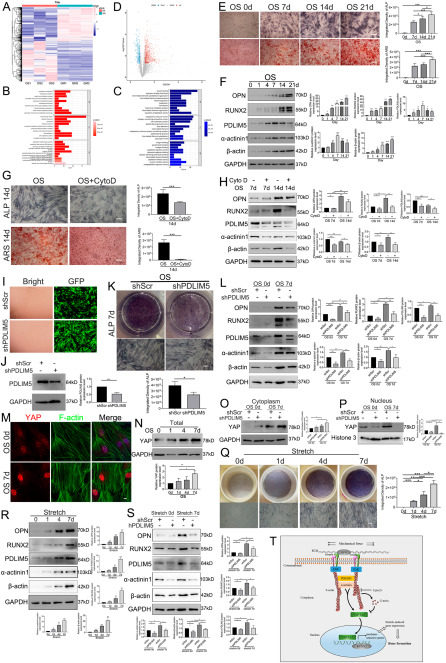
Mechanical sensor PDLIM5 promotes the osteogenesis of human adipose-derived stem cells through microfilament alterations


Bone regeneration is a multifaceted, abstract, and well-coordinated physiological progression of bone formation that participates in continuous regeneration and remodeling throughout life. However, when it comes to complex clinical situations requiring extensive bone regeneration, such as massive bone defects caused by injuries, infection, or tumor removal, traditional methods do not often yield good treatment strategies or protocols due to their limitations.1 Stem cells, which have been shown to differentiate into diverse lines, have great potential to treat many diseases.2 The stem cells provide an excellent opportunity to study local strategies for bone healing and even systematic enhancement of bone repair, thereby overcoming the limitations of current methods. PDZ and LIM domain 5 (PDLIM5) is regarded as a cytoskeleton-related protein that is intimately connected to the dynamic alterations of microfilaments and can mediate signal transmissions between the cell nucleus and the cytoskeleton. PDLIM5 is also defined as a mechanosensitive protein that exhibits tension-dependent nuclear translocation in cells, displaying a mechanoconductive relationship with Yes-associated protein (YAP).3 Therefore, it is useful to further understand PDLIM5's molecular mechanism in osteogenic differentiation to study how it transfers external mechanical stimulation to the nuclear skeleton through the cytoskeleton and controls osteo-genes.
